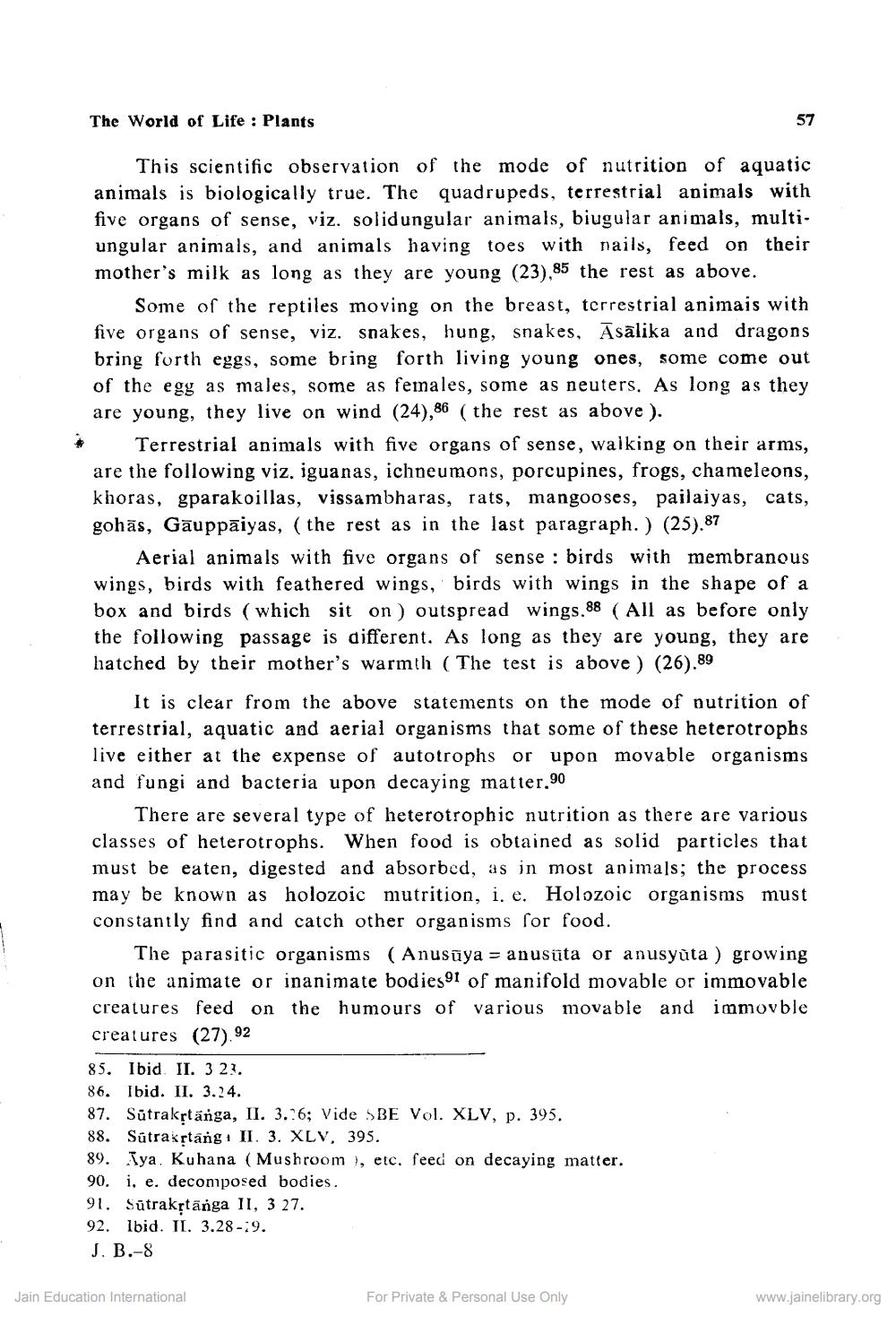________________
The World of Life : Plants
This scientific observation of the mode of nutrition of aquatic animals is biologically true. The quadrupeds, terrestrial animals with five organs of sense, viz. solid ungular animals, biugular animals, multiungular animals, and animals having toes with nails, feed on their mother's milk as long as they are young (23),85 the rest as above.
Some of the reptiles moving on the breast, terrestrial animais with five organs of sense, viz. snakes, hung, snakes, Asalika and dragons bring forth eggs, some bring forth living young ones, some come out of the egg as males, some as females, some as neuters. As long as they are young, they live on wind (24),86 ( the rest as above ). # Terrestrial animals with five organs of sense, walking on their arms,
are the following viz. iguanas, ichneumons, porcupines, frogs, chameleons, khoras, gparakoillas, vissambharas, rats, mangooses, pailaiyas, cats, gohās, Gāuppāiyas, (the rest as in the last paragraph.) (25).87
Aerial animals with five organs of sense : birds with membranous wings, birds with feathered wings, birds with wings in the shape of a box and birds (which sit on ) outspread wings.88 (All as before only the following passage is different. As long as they are young, they are hatched by their mother's warmth (The test is above) (26).89
It is clear from the above statements on the mode of nutrition of terrestrial, aquatic and aerial organisms that some of these heterotrophs live either at the expense of autotrophs or upon movable organisms and fungi and bacteria upon decaying matter.90
There are several type of heterotrophic nutrition as there are various classes of heterotrophs. When food is obtained as solid particles that must be eaten, digested and absorbed, as in most animals; the process may be known as holozoic mutrition, i. e. Holozoic organisms must constantly find and catch other organisms for food.
The parasitic organisms (Anusuya = anusūta or anusyùta ) growing on the animate or inanimate bodies 91 of manifold movable or immovable creatures feed on the humours of various movable and immovble creatures (27) 92 85. Ibid. II. 3 23. 86. Ibid. II. 3.24. 87. Sūtraktänga, II. 3.26; Vide SBE Vol. XLV, p. 395. 88. Sútrakstang: II. 3. XLV, 395. 89. Iya. Kuhana (Mushroom ), etc. feed on decaying matter. 90. i, e. decomposed bodies. 91. Sūtrakstānga II, 3 27. 92. Ibid. II. 3.28-:9. J. B.-8
Jain Education International
For Private & Personal Use Only
www.jainelibrary.org




